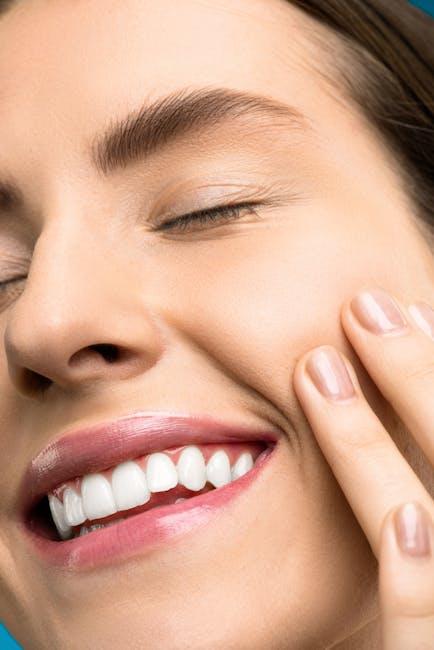
How White Should Your Teeth Really Be? – CNN
Everyone dreams of a dazzling white smile. But have you ever wondered how white your teeth should really be? Are the pearly whites you see in advertisements and on social media realistic or even healthy? In this article, inspired by expert insights and popular reporting on CNN, we’ll explore the natural range of tooth color, teeth whitening myths, and practical tips to achieve a smile that is both bright and healthy.
The Science Behind Tooth Color
Your tooth color is determined by several factors, including genetics, age, diet, and oral hygiene habits. Teeth naturally have a slight yellow or off-white tint due to the dentin layer beneath the enamel. Enamel itself is translucent, which means the color and thickness of dentin impact how white your teeth appear.
Natural Variations in Tooth Color
- Genetics: Some people naturally have whiter enamel, while others have more yellowish hues.
- Aging: Over time, enamel thins and dentin darkens, causing teeth to appear less white.
- Lifestyle: Consuming coffee, tea, red wine, and smoking can lead to staining.
How White Should Your Teeth Be? – Setting Realistic Expectations
Contrary to popular belief, the brightest, snow-white teeth you see online aren’t the standard for everyone—and many whitening procedures don’t replicate a natural, healthy shade. Dental professionals often refer to the Vita shade guide to classify tooth color, which ranges from reddish-brown to yellowish-white shades.
| Shade Category | Description | Typical Appearance |
|---|---|---|
| A Shades | Reddish-brown tints | Warm, natural yellowish-white |
| B Shades | Reddish-yellow tints | Classic “natural” white with some warmth |
| C Shades | Grey shades | Muted white with ashen tones |
| D Shades | Reddish-grey shades | Cooler, darker off-white hues |
Experts say: The goal of teeth whitening should be to enhance your natural shade, not to create an artificial, overly bright look.
Benefits of Maintaining a Natural White Smile
- Boosted confidence: Feeling good about your smile can improve social and professional interactions.
- Dental health awareness: Seeking appropriate whitening encourages regular dentist visits and better oral care.
- Preserving enamel: Avoiding aggressive bleaching can protect sensitive teeth and prevent long-term damage.
Practical Tips for a Naturally Whiter Smile
Enhancing your smile doesn’t always mean chemical bleaching. Here are some practical, safe methods to maintain or improve your tooth whiteness:
1. Maintain Good Oral Hygiene
- Brush at least twice daily using fluoride toothpaste.
- Floss regularly to remove plaque and stains between teeth.
- Consider a whitening toothpaste with mild abrasives.
2. Watch Your Diet
- Limit foods and beverages that stain (coffee, red wine, berries, cola).
- Rinse mouth or brush teeth after consuming staining items.
- Eat crunchy fruits and vegetables (apples, carrots) which act as natural tooth cleaners.
3. Avoid Tobacco
Smoking and chewing tobacco cause deep, stubborn stains and increase gum disease risk, impacting teeth color.
4. Professional Whitening Treatments
If considering whitening, consult a licensed dentist for tailored solutions like in-office bleaching or custom trays. Avoid over-the-counter kits without professional supervision to prevent sensitivity or enamel damage.
Case Study: Real-Life Whitening Experiences
Jane, a 34-year-old professional, shared her journey with teeth whitening after seeing discoloration from years of coffee:
- Initial condition: Slight yellowing, some surface stains.
- Approach: She used professional whitening trays prescribed by her dentist.
- Result: A natural, brighter smile that matched her skin tone without the artificial, ultra-white look.
- Takeaway: Jane emphasizes that “whitening is about feeling confident, not about getting movie-perfect teeth.”
Common Teeth Whitening Myths Debunked
| Myth | Fact |
|---|---|
| All teeth can become perfectly white | Natural tooth color varies; some stains or discolorations are resistant to whitening. |
| Whitening damages your teeth permanently | Professional whitening is safe when used properly; overuse or unregulated products can cause sensitivity. |
| Whitening toothpaste can make teeth dramatically white | Most whitening toothpastes only remove surface stains and do not change natural tooth color. |
| You only need whitening once | Maintenance treatments and good habits are often needed to sustain results. |
Conclusion: Embrace Your Natural Smile with Confidence
So, how white should your teeth really be? The answer lies not in achieving an unrealistic Hollywood smile but in finding a healthy, natural shade that complements your unique appearance. Proper dental care, smart lifestyle choices, and professional guidance are your best tools for glowing teeth that reflect confidence and wellness.
Before jumping into whitening treatments, consider the underlying health of your teeth and talk to your dentist about what shade is right for you. Remember, a truly beautiful smile shines brightest when it’s genuine and well cared for.


